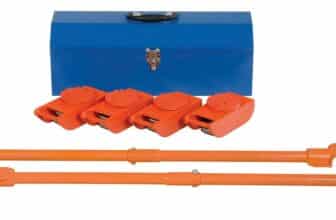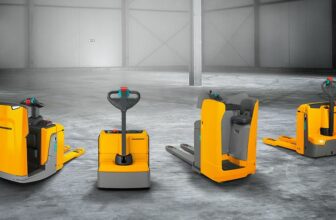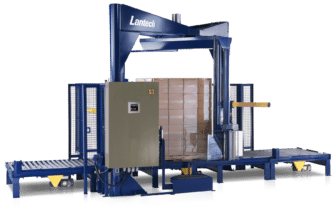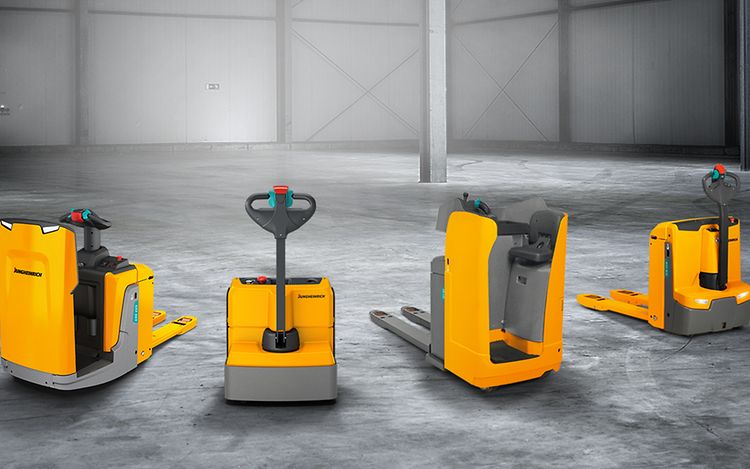
Panel carts are versatile and essential tools for transporting heavy and cumbersome materials in a variety of settings. From construction sites to offices, these handy devices offer convenience, efficiency, and safety when moving panels, sheets, and other large items. In this article, we’ll explore the many benefits of using panel carts, the different types available, factors to consider when choosing one, safety tips, and where to purchase them. So, let’s dive in and discover why panel carts are a must-have tool for any project or workplace.
Introduction to Panel Carts
Panel carts are specialized transport tools designed to ease the movement of large and heavy objects, particularly panels, sheets, and boards. These carts typically feature a flat or tilted surface with secure edges, sturdy frames, and wheels for easy mobility. With their ergonomic design, panel carts minimize strain on workers and provide a more efficient way to transport materials from one place to another.
What Are Panel Carts Used For?
Panel carts serve various purposes across different industries. They are commonly used in construction sites, warehouses, manufacturing facilities, and even in residential and office settings. These versatile carts can transport a wide range of materials, including plywood, drywall, metal sheets, glass panels, doors, and furniture.
Benefits of Using Panel Carts
Easy Transportation
One of the primary advantages of panel carts is their ability to simplify the transportation process. By using a panel cart, workers can move heavy panels with ease, reducing the physical strain and fatigue associated with manual lifting. The carts’ smooth-rolling wheels allow for effortless maneuverability, even in tight spaces, ensuring that materials can be moved quickly and efficiently.
Increased Efficiency
Using a panel cart significantly improves efficiency in material handling tasks. Instead of relying on multiple workers or excessive physical exertion, a single person can easily load panels onto the cart and transport them to their destination. This streamlined process saves time and energy, enabling workers to focus on other critical aspects of their work.
Reduced Strain and Injury Risk
Manual lifting and carrying of heavy materials pose a significant risk of strain and injury. Panel carts alleviate this risk by providing a stable and secure platform for transporting panels. Workers can push or pull the cart rather than lifting and carrying the load, minimizing the chances of back injuries, strains, and accidents. By using panel carts, employers also demonstrate their commitment to maintaining a safe working environment.
Types of Panel Carts
Panel carts come in different configurations to accommodate various materials and environments. Here are three common types of panel carts:
Flatbed Panel Carts
Flatbed panel carts feature a level platform with raised edges to prevent materials from sliding off during transportation. These carts are ideal for carrying large, flat items like plywood, drywall, and glass panels. Some flatbed panel carts also include additional features such as adjustable handles or foldable frames for easy storage.
Tilted Panel Carts
Tilted panel carts, also known as slanted panel carts, have an angled platform that allows for easier loading and unloading of panels. The tilted design enables workers to slide materials onto the cart without requiring excessive lifting or bending. Tilted panel carts are especially useful for handling heavy items that would be challenging to lift onto a flatbed cart.
Multi-Purpose Panel Carts
Multi-purpose panel carts offer versatile functionality by combining the features of flatbed and tilted carts. These carts feature a platform that can be adjusted to different angles, allowing users to adapt to various material handling needs. With their versatility, multi-purpose panel carts are suitable for a wide range of industries and applications.
Factors to Consider When Choosing a Panel Cart
When selecting a panel cart, several factors should be taken into account to ensure it meets your specific requirements. Here are some essential considerations:
Weight Capacity
Different panel carts have varying weight capacities. It is crucial to choose a cart that can safely handle the weight of the materials you intend to transport. Exceeding the weight capacity can compromise the cart’s stability and put workers at risk.
Maneuverability
Consider the cart’s maneuverability features, such as the size and type of wheels. Larger wheels are better suited for rough terrain, while swivel casters provide greater maneuverability in tight spaces. Additionally, carts with brakes can provide added safety when loading or unloading materials.
Durability
Look for panel carts made from robust and durable materials such as steel or heavy-duty plastic. These carts can withstand frequent use and heavy loads without the risk of structural failure. Checking customer reviews and product specifications can help assess the durability of different cart models.
Size and Dimensions
The size and dimensions of the cart are essential, particularly if you have limited space or need to transport materials through narrow doorways or hallways. Consider the width, length, and height of the cart to ensure it can accommodate the materials and maneuver in your specific environment.
Tips for Using Panel Carts Safely
While panel carts provide a safer alternative to manual lifting, it is still important to follow proper safety guidelines. Here are some tips to ensure the safe use of panel carts:
Proper Lifting Techniques
When loading panels onto a cart, use proper lifting techniques to avoid strain or injury. Bend your knees and keep your back straight while lifting. Ask for assistance if the panel is too heavy or awkward to handle alone.
Securing the Load
Ensure that the materials are securely fastened to the cart before moving. If the cart has straps or brackets, utilize them to prevent the load from shifting or falling during transportation. A secure load reduces the risk of accidents and damage to the materials.
Clearing Pathways
Before moving the panel cart, clear the pathways of any obstacles that may obstruct movement. Remove debris, cords, or other potential tripping hazards to ensure a safe and unobstructed path.
How to Maintain and Extend the Lifespan of Panel Carts
To maximize the lifespan and performance of your panel cart, proper maintenance is crucial. Here are some maintenance tips to keep your cart in excellent condition:
Regular Cleaning and Inspection
Clean the cart regularly to remove dirt, dust, and debris that can accumulate over time. Inspect the cart for any signs of damage, such as cracks, loose screws, or worn-out wheels. Promptly address any issues to prevent further damage and ensure safe operation.
Lubrication of Moving Parts
Periodically lubricate the cart’s wheels and moving parts to maintain smooth operation. Lubrication reduces friction, allowing the wheels to roll effortlessly and preventing premature wear.
Storage and Protection
When not in use, store the panel cart in a dry and secure location. Protect it from extreme temperatures, moisture, and direct sunlight, as these can deteriorate the cart’s materials and affect its performance. Consider covering the cart to prevent dust accumulation.
Panel Carts: A Must-Have Tool for Construction and Renovation Projects
In construction and renovation projects, panel carts play a vital role in ensuring efficient material handling. Here’s why they are an indispensable tool for these industries:
Efficient Material Handling
Construction and renovation projects often involve moving large quantities of panels, drywall, and other heavy materials. With panel carts, workers can quickly and safely transport these materials from storage areas to the work site, minimizing downtime and increasing productivity.
Streamlined Workflow
By using panel carts, construction and renovation crews can streamline their workflow. Instead of relying on manual labor alone, panel carts allow workers to move materials more efficiently, enabling them to complete projects within deadlines and allocate their time and energy to other essential tasks.
Cost and Time Savings
Using panel carts can result in significant cost and time savings. With reduced physical strain and injuries, workers experience fewer absences, resulting in improved productivity and lower healthcare costs for employers. Additionally, the efficiency gained from using panel carts helps projects progress more quickly, reducing labor costs and enhancing overall profitability.
Panel Carts for Home and Office Use
Panel carts are not limited to construction sites or warehouses; they also offer practical benefits for home and office use. Here are some scenarios where panel carts can be valuable:
Furniture and Appliance Transportation
When moving furniture or appliances, panel carts provide a convenient and safe solution. Instead of struggling with heavy items, a panel cart allows you to transport them effortlessly, reducing the risk of damage to the items or injury to yourself.
Office Equipment and Supplies
In office settings, panel carts can be used to transport equipment, supplies, and files between different areas. Whether you need to move printers, filing cabinets, or boxes of documents, a panel cart can make the task much more manageable.
Panel Carts vs. Other Material Handling Equipment
While panel carts are highly versatile, it’s essential to understand how they compare to other material handling equipment. Let’s explore a few alternatives:
Dollies
Dollies are flat platforms with wheels that are primarily used for moving boxes or smaller items. While they can be useful for lighter loads, they may not provide sufficient support and stability for larger panels or heavy materials.
Hand Trucks
Hand trucks, also known as two-wheeled dollies, feature a vertical frame and a small baseplate. They are suitable for transporting tall or narrow items, such as refrigerators or stacked boxes. However, hand trucks may not be as effective for wider or longer panels, where a flat or tilted surface is more advantageous.
Platform Trucks
Platform trucks are large, flatbed carts with four wheels and a handle for pushing or pulling. These trucks can handle substantial weight loads and are often used in industrial settings. While platform trucks can transport panels, they may lack the specialized features of dedicated panel carts, such as tilted platforms or adjustable angles.
Where to Purchase Panel Carts
When considering the purchase of a panel cart, several options are available. Here are a few places where you can find panel carts:
Hardware and Home Improvement Stores
Many hardware and home improvement stores offer a selection of panel carts. Visit your local store to see different models in person, ask questions, and assess their suitability for your needs.
Online Retailers
Numerous online retailers specialize in material handling equipment, including panel carts. Websites like Amazon, Home Depot, and Grainger offer a wide range of options, detailed product descriptions, and customer reviews to help you make an informed decision.
Industrial Supply Companies
Industrial supply companies often carry a variety of panel carts designed for heavy-duty use. These companies cater to businesses and provide access to high-quality carts that can withstand rigorous environments.
How to Choose the Right Panel Cart for Your Needs
Choosing the right panel cart depends on your specific requirements. Consider the following steps to make an informed decision:
Assessing Your Requirements
Evaluate the size, weight, and type of materials you regularly handle. Determine the frequency of use and the environment in which the cart will be used. Understanding these factors will help narrow down your options and select a cart that meets your needs.
Reading Customer Reviews
Research customer reviews and ratings for different panel cart models. Look for feedback on durability, ease of use, and any potential drawbacks. Real-world experiences shared by customers can provide valuable insights into the cart’s performance and suitability for your purposes.
Comparing Features and Prices
Compare the features, specifications, and prices of different panel carts. Consider factors such as weight capacity, maneuverability, and additional features that may be beneficial for your specific applications. Balance your budget with the cart’s quality and features to find the best value for your investment.
Conclusion
Panel carts are indispensable tools for efficient material handling in a variety of settings, from construction sites to offices and homes. These versatile carts provide easy transportation, increased efficiency, and reduced strain and injury risk. By choosing the right panel cart for your needs and following safety guidelines, you can streamline your workflow, enhance productivity, and protect the well-being of your workers. Whether you’re a construction professional, warehouse manager, or someone looking for an easier way to move heavy items, investing in a panel cart is a decision that will pay off in the long run.
FAQ Section
Are panel carts suitable for moving fragile materials like glass?
Absolutely! Panel carts with secure edges and a tilted platform are well-suited for transporting fragile materials like glass. The tilted design reduces the risk of breakage and makes it easier to load and unload delicate panels.
Can panel carts be used on uneven terrain?
While panel carts are generally designed for flat surfaces, some models have larger wheels or pneumatic tires that can handle rougher terrain. If you anticipate using a panel cart on uneven ground, look for models specifically designed for outdoor or rugged environments.
Can panel carts be folded for easy storage?
Yes, many panel carts offer foldable features for convenient storage when not in use. Foldable carts are especially useful if you have limited space or frequently transport the cart between different locations.
What is the average weight capacity of panel carts?
The weight capacity of panel carts can vary significantly depending on the model. It is important to check the manufacturer’s specifications and choose a cart that can safely support the weight of the materials you need to transport. Common weight capacities range from 500 to 2,000 pounds or more.
Are panel carts only used in industrial settings?
No, panel carts have versatile applications and are used in a wide range of settings. While they are commonly used in construction, manufacturing, and warehousing, they can also be valuable in offices, homes, retail stores, and other environments where heavy items need to be transported efficiently and safely.












